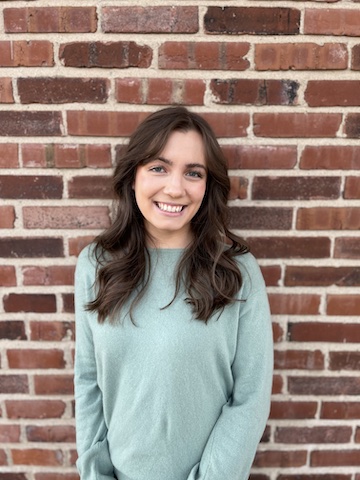
SLPS in Literacy Series: Literacy and Articulation
February 20, 2023
Speech sound disorders or articulation disorders often co-occur with literacy difficulties later in development (Peterson et al, 2009). Incorporating phonological awareness or phonemic awareness into articulation sessions is necessary not only to bolster literacy abilities but also to serve as a paramount foundation for our articulation sessions. This article will discuss areas of intervention but also supply practical therapy session ideas.
Phonological Awareness Activities
Phonological awareness is an important stepping stone to literacy development, as it grounds our ability to understand and manipulate verbal language before we begin to decode written language. There are a substantial number of phonological awareness areas that you can target along with speech sound disorders, including word awareness, syllable awareness, onset-rhyme production/identification, and sound blending/segmentation, among others.
Rhyme Recognition/Production Activity
This is a great skill to target for ages preschool through kindergarten. It can be targeted in a multitude of ways, but my personal favorite involves using paint dotters. Get a piece of paper and draw 10 circles with pictures that correlate to your target sound.
For this example, we will use /p/. Your sample words can include pat, pan, pink, and pour, among others. Have your client name a word that rhymes with the targeted sound while incorporating auditory bombardment (Our next word is pink! Pink is a great color, I love pink. What do you think rhymes with pink? Puh- puh- puh- pink! Maybe “think” rhymes with pink!). When the correct word is named, have your client stamp each picture with their chosen paint dotter.
Initial/Final Sound Segmentation
Initial and final phoneme segmentation begins with the ability to identify and isolate individual phonemes from entire words. Beginning with errorless learning can help clients improve their confidence prior to data collection.
In practice, this typically works well with a familiar story or song. For example, if a student’s preferred song is “Wheels on the Bus,” and we are targeting the phoneme /b/ in our articulation therapy, intentionally substitute /b/ on the word “bus” for /t/ or /g/ and encourage clients to correct you. This not only provides excellent opportunities to establish auditory monitoring abilities that will improve the development of their articulation abilities, but it also supplies them an opportunity to begin isolating initial phonemes.
Phoneme Addition/Deletion
Use of visual phonemes is often helpful when initially targeting phoneme addition as well as deletion. Luckily – this is equally helpful for articulation therapy activities. Take the phoneme /l/ for example. When targeting /l/ in minimal pairs, it is also targeting phoneme addition and deletion. You can pair together pictures of words like “neigh” and “pay,” and supply the visual symbol /l/ on the end of each word to create words like “nail” and “pail.”
To make it more fun, place these target pictures around your therapy room and encourage the student to go on a scavenger hunt with their “clue” - the letter /l/. Not only does this target your desired phoneme in the final position, but it also helps with sound segmenting, addition, and deletion.
How do I adapt these activities for older students?
As always – it depends! Targeting other forms of language such as the use of appropriate morphology, syntax, and receptive vocabulary or semantic abilities are often areas of need in students from late elementary to middle school (Preston & Edwards, 2010). These skills can help bolster literacy abilities in similar ways as phonological awareness tasks, that is if the above-mentioned phonological abilities are already present and established.
For some students, going back to the basics of phonological awareness is necessary. The trick is to keep the activities engaging and interesting for an older student.
For some students, this is as simple as choosing a different book to read such as a graphic novel, an article about a preferred subject (sports, robots, art, pop culture, etc.), or using a different medium. Using music from preferred artists can often increase interest and provide a natural avenue to target these phonemic awareness abilities. Most songs rhyme, allowing for a seamless avenue to target rhyme identification as well as production. Many students have the words to their favorite songs memorized even if they have never seen the words written down. Adding and deleting phonemes or allowing them to participate in the same activity discussed in the Initial/Final Sound Segmentation section of this article but with a preferred song grants us the ability to target the same vital phonological awareness abilities through a more age-appropriate medium.
Integrating phonological or phonemic awareness activities seamlessly with our more familiar articulation therapy sessions not only effectively targets improved speech sound production and thereby intelligibility but can also help our at-risk clients with their literacy skills.
Keep an eye out for the next post in this series where we will discuss integrating literacy skills with a multitude of other common diagnoses that SLPs often treat.
Read more from this series: SLPs and Literacy and Reading Specialists – Where is the Overlap?
References & For Further Reading
Givens, B. (n.d.). 5 simple tools for integrating literacy into Articulation Therapy. MedBridge Blog. Retrieved January 25, 2023, from https://www.medbridgeeducation.com/blog/2022/01/5-simple-tools-for-integrating-literacy-into-articulation-therapy/
Hayiou-Thomas, M. E., Carroll, J. M., Leavett, R., Hulme, C., & Snowling, M. J. (2016). When does speech sound disorder matter for literacy? the role of disordered speech errors, co-occurring language impairment and family risk of dyslexia. Journal of Child Psychology and Psychiatry, 58(2), 197–205. https://doi.org/10.1111/jcpp.12648
Lewis, K. S. (2019, July 1). 5 ways to incorporate literacy into articulation therapy. MedBridge Blog. Retrieved January 25, 2023, from https://www.medbridgeeducation.com/blog/2019/05/5-ways-to-incorporate-literacy-into-articulation-therapy/
Peterson, R. L., Pennington, B. F., Shriberg, L. D., & Boada, R. (2009). What influences literacy outcome in children with speech sound disorder? Journal of Speech, Language, and Hearing Research, 52(5), 1175–1188. https://doi.org/10.1044/1092-4388(2009/08-0024)
Preston, J. & Edwards, M. L. (2010). Phonological awareness and types of sound errors in preschoolers with speech sound disorders. Journal of Speech, Language, and Hearing Research, 53(1): 44–60.
About the Author

Marisa Julius is a speech-language pathologist that has worked in both public and private school settings with a focus in pediatric augmentative and alternative communication therapy. She currently works for a private specialized school setting with children 5-21 with complex communication needs and a variety of disorders including Autism Spectrum Disorder, Down Syndrome, Childhood Apraxia of Speech, Language Delays, Reactive Attachment Disorder, and more. She is a Missouri native and earned two Bachelor degrees from Truman State University in Communication Disorders and German Studies. She received her M.A. in Communication Sciences and Disorders from Saint Louis University. She considers herself a lifelong learner, and is thrilled to be writing for SLP Toolkit, if only for an additional excuse to read more. In her free time, you can find her cooking, reading, hiking, or showing everyone unsolicited pictures of her dog.



